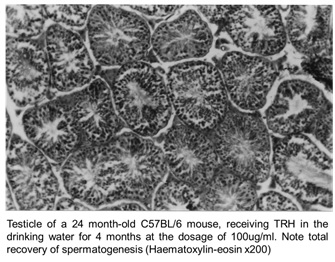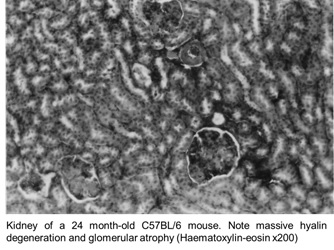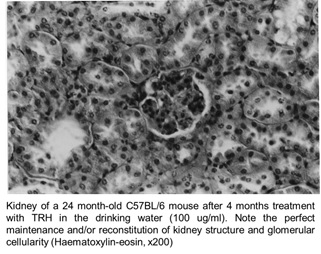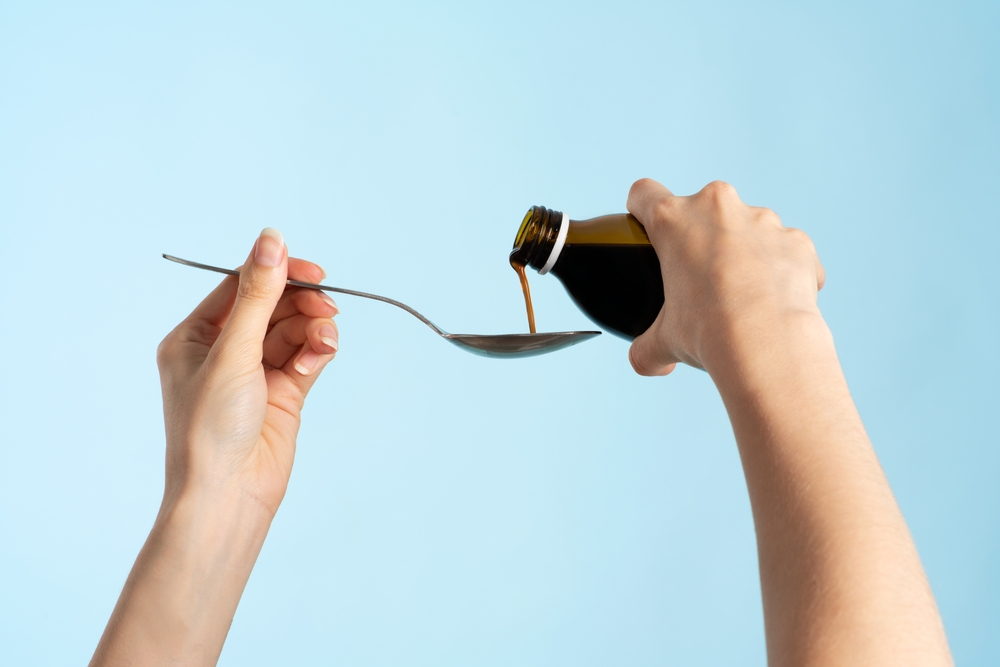
The TRH miracle! An interview with Walter Pierpaoli, M.D.
November 29th, 2016The TRH miracle! An interview with Walter Pierpaoli, M.D.
Dr. Pierpaoli is a famous medical professional within the antiaging fraternity because of his extensive published research in the fields of aging, cancer and immunity. He has tirelessly relayed this to other health professionals and researchers through his own; ‘Stromboli conference on aging and cancer’ which takes place in Italy every 3 years.
He is also known to many members of the public because of the various books he has written; in particular his ‘melatonin miracle’ which was on the New York bestsellers list for many years.
In this interview, Dr. Pierpaoli discusses with Phil Micans the role of TRH and why it might be the next ‘miracle molecule.’
Phil: Dr. Pierpaoli, may I begin by asking you the most obvious first question? Can you please tell us what TRH is and what are its roles are considered to be- at least from the point of view of ‘mainstream’ medicine?
Dr. Pierpaoli: Thank you Phil for inviting me to explain what TRH is. First of all, we are facing again a misleading name attributed to this tiny tripeptide molecule, composed as it is of three aminoacids, namely histidine, proline and glutamine. It was discovered by the Nobel Prize Roger Guillemin, whom I met many years ago at a conference. He did a gigantic/ heroic work to identify it and gave it a name which expresses an activity which, however, is negligible: Thyrotropic Releasing Hormone or TRH. The activity of TRH, found in the hypothalamus of pigs by Guillemin, is also able to stimulate a lazy pituitary gland to produce TSH, Thyroid Stimulating Hormone. Again this semantic problem and this nomenclature given to molecules, similarly to Prolactin, generates confusion and restricts the attention from much wider activities of the greater physiological relevance. It is a true disgrace that we focus on names rather than on activities. Therefore for the majority of doctors and endocrinologists TRH serves only to activate TSH in the case of pituitary dysfunction, they use it to evaluate with an injection of 400 ug to see if the pituitary gland can produce TSH and thus stimulate the thyroid to release T3 and T4. This was also my idea in 1989, when I was thinking that melatonin may act via the thyroid and, to my surprise I saw that the activity of TRH was totally independent from the thyroid. I must point out that it is in fact that in most mammals TRH has no effect whatsoever on the thyroid!
Phil: So the Greek philosopher Epictetus was right when he said; “It is impossible for anyone to start understanding what he thinks he already knows.”
Dr. Pierpaoli: Yes! Well said.
Phil: So in the course of your research, what attracted you to first study TRH, believing as I understand you did, that it may have special properties?
Dr. Pierpaoli: What I saw in my first experiments attracted my keen attention simply because I was also trapped with the misleading name at the time, and then TRH presented itself with something of an unimaginable protective power. We saw that it was able to reconstitute a thymus already made atrophic, which indicates a powerful immunoenhancing and protecting effect; it showed potent antiviral protective affects in mice infected with lethal encephalomyocarditis virus and that the activity was completely independent from the thyroid. The central role of TRH in physiology in the body was so clear and amazing that already with our first publication we depicted a slide showing how TRH must play a key role in cell physiology. I became more and more fascinated with this molecule, which is ubiquitous in the amphibians’ biological world. It is present, with thousands of other peptides of all sizes, in rice, vegetables and is highly concentrated in the skin of cold-blooded amphibians. In humans, it is present in certain parts of the hypothalamus, in the pineal gland and most importantly in the beta cells of the pancreas. I started thinking that TRH was a magic peptide containing the unstable aminoacid histidine that it must have acquired through evolution, a key role for the maintenance of temperature through oxygen-dependent glucose metabolism by regulating insulin production and release. This seems in fact to be the case. I felt like awaking from a millennia-long fog and TRH was becoming something totally different in my mind, a true ancestral and primordial life-generating molecule! This concept and the results were fundamental to organize the Fifth Stromboli Conference on Aging and Cancer in June 2010 and I’m delighted that the volume about this is going to be published in 2012 in Current Aging Science by Benthan Books.
Phil: And in your early animal trials what sort of results did you see?
Dr. Pierpaoli: What I saw in my animal experiments was truly striking. Thanks to its key role in cell metabolism, TRH, similarly but differently from melatonin, modifies all age-related values to normality. Whatever you measure after acute or chronic oral or IV or subcutaneous treatment in aging mice, the modification observed shows true aging-reversing effects, they can be measured via the ions, hormones, blood or immunological parameters.
Phil: Very interesting, I can see why it piqued your interest. And in the continuing animal experiments what else was uncovered?
Dr. Pierpaoli: I am used to capture ‘the truth’ about organs and tissues and have always used light microscopy/ histology from the time I was a student. I make slices of tissues, stain them and watch them under the microscope. Only this is the convincing stuff for me. Quite simply I want to ‘touch with my fingers’ what is going on after treatment in old mice. In spite of some previous hints that we were confronted with a life-generating molecule whose role is prominent for life itself, I was almost paralyzed by shock when I saw the testes, pancreas and the kidneys of TRH-treated mice. Old mice show atrophic testes where follicles are empty of spermatozoa and generally old mice die of kidney sclerosis/ nephrosclerosis. I saw a true reversal of aging! The surprise confirmed my first suspicions from my first experiment in 1989 and confirmed the key role of TRH in the maintenance of all body functions by a mechanism which is probably essential for the genesis on life itself on our planet.


Figure 1: Shows on the first image the testicle follicles of an old 2-year mouse with an inability for sperm production. On the second image is another 2-year old mouse testicles; but here after 4 months of TRH treatment he has complete recovery of sperm production.


Figure 2: On the first image the kidney of a 2 year old mouse showing signs of typical age related disorders. On the second image another 2 year old mouse kidney but now after 4 months treatment with TRH, many signs of the rejuvenation of function are shown.
Phil: My goodness, so there have been significant improvements seen in animals that have implications for fertility, renal disorders and immunity- an incredible range of functions. How is it possible that ‘a hormone’ can have such widespread activity?
Dr. Pierpaoli: The more I read about TRH in the literature, the more convinced I am that we must open our mind to a totally new dimension of life and death. There are molecules such as TRH which have started the first aggregation of life in the primeval soup. I suspect that TRH was an initiator of life thanks to its instability by opening and closing the primeval molecules to exchange ions. After all, we are built with ions and hormones and their interplay, namely hormonal inter-synchronization which regulates our clock in the brain to the day-night-seasonal cyclicity, via thermoregulation. I do believe TRH is the first building block of our extraordinary life adventure. Our aim in not immortality, but a long healthy and disease-free life and TRH is a first answer.
Phil: Have any other significant benefits been noted in addition to what you have already mentioned?
Dr. Pierpaoli: TRH also produces a regulation of lipid levels in the blood as we have shown with three models in a paper published in 2011. Virtually all the parameters that have been studied to date appear to normalise over several months of TRH use. For example, we’ve seen improvements to cholesterol, triglycerides, phospholipids, albumin, aminotransferases, urea, testosterone and glucose to name but a few. Plus, in the animals it helped to restore healthy organ weights of the kidneys, thymus, adrenals, testes, heart and liver. But most people become most excited when we mention the weight loss!
Phil: Gosh! So what reasoning is behind the ability of TRH to induce weight loss?
Dr. Pierpaoli: It is simple; TRH activates basal metabolism via regulation of anabolic hormones and proper release of insulin. Glucose is burnt and fat is not stored. Only TRH can do that without any side-effect. It must be emphasized that TRH even if injected intravenously in huge amounts, has no side effect whatsoever. This magic molecule of nature knows what to do and how to do it.

Figure 3: Shows the body weight of mice before treatment with TRH, at 13 days after treatment and then again at 30 days. An average body weight loss of 13% within a month has been seen and substantiated with another animal trial.
Phil: So the sixty four million Dollar question is- what have you seen in your own patients using TRH?
Dr. Pierpaoli: Fundamentally, I see always that they feel well and always ask for more TRH! The only problem is the current cost. We are working on it because costs hamper higher dosage/ long term use and thus more clinical work is needed. But because TRH is a natural molecule and cannot be patented I do not think that the drug companies are interested.
Phil: Can you please tell our readers the typical dose a patient takes of TRH and how long they typically take it for?
Dr. Pierpaoli: In the course of 22 years and many trials I decided that a daily sublingual tablet of 5 mg is correct. In fact any other method would require very high and expensive treatments. The tripeptide is rapidly destroyed in the stomach, but can pass directly into the blood if the tablet is kept under the tongue in the morning for a few minutes until complete solution. One must be patient; it is an expensive but life-saving procedure- there’s no need to hurry! I suggest cycles of one month on, one month off, thus TRH is taken for six months in a year.
Phil: Of course I must ask- at the doses mentioned, have there been any side effects or contraindications to date in your patients?
Dr. Pierpaoli: No side-effects, no contraindication. Of course 5 mg is a relatively minimal dose, and currently whilst costs are high, in the future- as the sublingual tablets become more popular I am sure that the costs will fall, it will be a common effort for the benefit of all of us all.
Phil: Do you think there will be more to come about the TRH research?
Dr. Pierpaoli: Undoubtedly, we’re working on the submission of a paper at the moment that shows that TRH induces insulin-producing cell proliferation; that could have great implications for diabetics.
Phil: Congratulations on exposing these remarkable qualities about this hitherto relatively obscure molecule. Are there any plans to write a book about this discovery- ‘the TRH miracle’ perhaps?
Dr. Pierpaoli: I hope so. I must find a proper medical writer who wants to stay young and wants to be involved with a bestselling book. Perhaps somebody can suggest him or her to me? I am waiting: we have plenty of time, or maybe not? (Ha ha)
Phil: Thank you very much for your time and sharing your research with us today.
Dr. Pierpaoli: You’re welcome.








